- Home
- Craig Alanson
Valkyrie (Expeditionary Force Book 9)
Valkyrie (Expeditionary Force Book 9) Read online
Expeditionary Force
Book 9:
VALKYRIE
By
Craig Alanson
Text copyright © 2019 Craig Alanson
All Rights Reserved
Contact the author
[email protected]
Cover Design By
Alexandre Rito
Table of Contents
CHAPTER ONE
CHAPTER TWO
CHAPTER THREE
CHAPTER FOUR
CHAPTER FIVE
CHAPTER SIX
CHAPTER SEVEN
CHAPTER EIGHT
CHAPTER NINE
CHAPTER TEN
CHAPTER ELEVEN
CHAPTER TWELVE
CHAPTER THIRTEEN
CHAPTER FOURTEEN
CHAPTER FIFTEEN
CHAPTER SIXTEEN
CHAPTER SEVENTEEN
CHAPTER EIGHTEEN
CHAPTER NINETEEN
CHAPTER TWENTY
CHAPTER TWENTY ONE
CHAPTER TWENTY TWO
CHAPTER TWENTY THREE
CHAPTER TWENTY FOUR
CHAPTER TWENTY FIVE
CHAPTER TWENTY SIX
CHAPTER TWENTY SEVEN
CHAPTER TWENTY EIGHT
CHAPTER TWENTY NINE
CHAPTER THIRTY
CHAPTER THIRTY ONE
CHAPTER THIRTY TWO
CHAPTER THIRTY THREE
CHAPTER THIRTY FOUR
CHAPTER THIRTY FIVE
CHAPTER THIRTY SIX
CHAPTER THIRTY SEVEN
CHAPTER THIRTY EIGHT
CHAPTER THIRTY NINE
CHAPTER FORTY
CHAPTER FORTY ONE
CHAPTER ONE
The ominous, watchful silence of the Koprahdru star system was shattered by twin gamma ray bursts, as a pair of Maxolhx destroyers in tight formation jumped in four lightminutes from the only inhabited planet. That world was a lifeless rock slightly smaller than Mars, and orbiting the local star so closely that the surface facing the local star was hot enough to melt soft metals. No one wanted to live on that scorched planet, the three hundred residents were there to conduct scientific research directed at the variable star, or to support those scientists, or they were families of the personnel unlucky to draw that assignment. Only sixteen of the scientists actually were excited to be there, as it was the best place in Bosphuraq territory to study whatever nerdy thing was their specialty.
Until recently, the research facility in the Koprahdru system was isolated, dull and in general suffered from low morale, but it was not dangerous. The habitation modules were buried deep in stable bedrock, safe from even the periodic eruptions of the star. Safe, unless an eruption was spectacularly violent, and unfortunately not predicted by the team of people whose careers were focused on understanding and predicting the fluctuations of variable stars. In that case, the facility would be in grave danger, and the scientists would have time to be extremely excited, before they died as the habitation facilities were crushed by heaving bedrock.
But that was very unlikely to happen.
An attack on the isolated and unimportant facility also was considered very unlikely until recently, especially an attack by the patrons of the Bosphuraq. Maybe the Jeraptha, Thuranin or other species of equivalent technology might, if they had literally nothing else to do, be interested in disrupting the basic research done there. The Maxolhx could have no conceivable reason to be interested in whatever boring things went on in the Koprahdru system.
Until the inconceivable happened.
Until the clients of the haughty Maxolhx posed a credible threat to their patrons.
The residents of the research facility had been fearfully watching the skies, ever since a passing star carrier dropped off a courier drone that raced by the planet to deliver the shocking and very bad news. A rogue group of Bosphuraq had apparently mastered technology beyond the capability of even the Maxolhx, then used that technology to attack a pair of their patrons’ starships. Perhaps even more shocking, another mysterious group of Bosphuraq had ratted out the rogue researchers, informing the Maxolhx of the unbelievable truth, in the hope that cooperation would be rewarded with leniency.
A foolish hope.
The Maxolhx had predictably, inevitably, almost automatically reacted to the threat by bombarding a long string of Bosphuraq military and research facilities, whether those facilities had any possible relation to the rogue group, or to the banned technology. What mattered to the Maxolhx was that they be seen as mercilessly punishing their traitorous clients. How and where that punishment was targeted was of little importance. In fact, if the Maxolhx were seen as callously and even deliberately targeting the innocent, that would make other potentially rebellious clients reconsider.
So, the support personnel, spouses and children of the scientists in the Koprahdru system were not seen as collateral damage, their deaths would instead be a satisfying bonus.
The pair of destroyers could have jumped into orbit close to the planet and launched an almost immediate attack, using a series of railgun darts to punch down to the bedrock, then dropping atomic-compression warheads down the hole to kill everyone below the surface. They had instead jumped in far away, so their slow approach would instill helpless terror in their powerless clients. The attack was conducted in a manner that might be described as casual, with no hurry to launch weapons, and no objective other than complete destruction. Actually, both destroyers had recently been pulled from storage as long-term reserves, and their crews were still working up to the required level of proficiency. That pair of ships had been dropped off by their mother star carrier simply because the task group commander felt those destroyers needed to see action, and Koprahdru was an easy target.
The destroyer crews treated the attack as a routine exercise, conducting only a brief sensor sweep of space around the planet, before selecting targets for their weapons.
If the sensor sweep had been more thorough, perhaps they might have detected that space around the planet was saturated with tiny microwormholes.
“And we are ‘Go’.” Simms announced in a flatly calm tone from her station on Valkyrie’s bridge. “In five, four-”
From my command chair, which unlike in Star Trek, was positioned off to the right side so I could observe all the duty stations without blocking anyone’s view of the holographic display sphere in the front, I tried to project a calm confidence. My mannerisms were modeled on James T. Kirk, as best I could. I had done The Lean, where I tilted my upper body to one side, elbow on an armrest, chin in one hand, eye narrowed, considering what bad-ass thing I would do next. Or the Crossed Leg casual stance in the chair, being as cool as I could be. Also the Chin Lift, thoughtfully staring down my nose at the display, in full command of the crew and situation.
Currently, instead of a cool Kirk move, I was doing my trademarked Joe Bishop Flop Sweat. My back was again stuck to my shirt, and rather than being still and calm, my fingers were drumming on the console of the armrest. Worried that I might accidentally launch a missile, I forced my fingers to drape over the side of the console.
Why was Jim Kirk cool under pressure and I was not? Because he relieved stress by doing the wild thing with hot babes across the galaxy, and I was not doing that.
That’s my story and I’m sticking to it.
We had finished running the last attack scenario three days before the planned H-Hour, then I ordered a full day of downtime for the crews of both ships. We brought Valkyrie close to the Flying Dutchman, so dropships could shuttle people back and forth, to get a change of scenery and visit friends. If some of those visits were conjugal in nature, that was none of my busi
ness, but it was certainly good for morale.
I spent part of that off day playing, and losing, at video games.
My life sucks.
Anyway, by H-Hour we were as ready as we could be, so I told Simms to give the order.
Skippy took up the count from Simms. “Three, two, one, showtime!”
Our massive battlecruiser jumped within twenty nine kilometers of the destroyer formation. Theoretically, a jump that close was impossible, because of a field projected by the enemy ships that was supposed to prevent inbound jump wormholes from forming. In the Roach Motel, we had torn apart a Maxolhx ship by jumping a dropship right on top of it, a feat only the awesomeness of Skippy could accomplish. Back then, the difficulty had been merely that the mass of the enemy ship caused our jump wormhole endpoint naturally to slide away from the ship, so Skippy had to compensate as only he could. In our attack against the pair of destroyers at Koprahdru, we also had to contend with an energy field that disrupted the formation of an inbound jump wormhole. That technology was a major advantage possessed by the Maxolhx, who had copied the technology from the Rindhalu, and unlike most stolen technology, the Maxolhx version worked better than the original. Skippy thought the Rindhalu were simply too lazy to develop their own technology any further, because they didn’t need to. Lesser species like the Esselgin had also tried, without much success, to copy that tech.
Anyway, even the awesomeness of Skippy had limits. If that Maxolhx ship in the Roach Motel had that type of disruption field technology active, we would not have been able to blow it up. In our attack on the pair of destroyers, twenty nine kilometers was the closest Skippy could manage without damaging our jump drive.
In space combat, twenty nine klicks is close. Twenty-nine kilometers left no time between the Maxolhx detecting our inbound jump and our railgun darts slamming into their shields. Leading each volley of darts were particle beams searing the same area of enemy shields, and right behind each dart was a missile. In our first two volleys, the missiles were loaded with warheads designed to send a surge of energy back along the enemy defense shield, to overload the generators. Through his awesomeness, Skippy was able to adjust the action of each missile warhead in real-time, so its individual surge would cause maximum overload at the time the surge reached a particular generator.
The crews of the destroyers had to be wondering what the hell was going on. One of their own ships jumped in, at a distance so close as to be impossible, and commenced hammering them with a precision that could only be accomplished if the weapons had extremely accurate targeting data programmed in before the jump. Which was also impossible. Our railgun darts hit so soon after our jump, that it was clear we had begun sending the darts down their launch rails before we emerged from jump.
Which, again, was impossible.
Yet, it was not impossible, because the hulls of those destroyers were shot clean through by our third volley of darts, and missiles then tore through the holes created by the darts. The missiles in the third volley had been loaded with warheads that could decide whether to continue weakening the enemy shields, or switch to explosive fragmentation mode.
All but one warhead chose wisely.
The enemy were also smart, and reacted with impressive speed. Seeing they were faced with overwhelming firepower, with their shield generators screaming warnings of impending overloads, and unable to jump away because of the damping field projected by Valkyrie, their ships automatically vented reactor plasma and ejected stored jump drive energy. Maxolhx ships did not use crude capacitors to store jump energy, but the technology they used created the same vulnerability; one hit to that stored energy could tear apart the ship.
Instantly, both ships were hidden by a fog of superheated reactor plasma, and the harsh arced lightning of released jump drive potential energy. That fog would have confused our targeting sensors, except our third volley of missiles were already inside the hulls of those ships.
Which, in case you are not keeping up with current events, was not a good thing for the two target destroyers.
Our chief pilot ‘Fireball’ Reed didn’t wait for an engraved invitation to jump us away before the enemy ships blew up or wrapped a damping field around us. The enemy also had weapons, and our shields were being rocked by their return fire of masers, particle beams, railgun darts and more exotic directed-energy devices. Enemy missiles had not reached us yet, with our defensive cannons taking credit for knocking out most of the inbound weapons.
Reed did not need to do anything. Before we commenced the attack, we had programmed the drive to automatically perform a jump away shortly after we launched our third volley. Skippy had calculated that at point-blank range, three volleys was all that would be needed. All Reed had to do was keep her index finger hovered over but not pressing the override button, and the navigation system did the rest. Because the nav system had not received an order to override, our jump drive opened a somewhat ragged hole in spacetime and pulled us away. The jump wormhole was untidy due to the effect of damping fields beginning to be projected by the pair of enemy ships, fields which fortunately had not reached strength sufficient to prevent us from disappearing, an instant before the enemy ships were ripped apart by multiple explosions.
Going into our first real fight with our new stolen battlecruiser, we were confident.
Still, the battle was two ships against one. The destroyers were equipped with the same suite of missiles that were carried in Valkyrie’s magazines. Our battlecruiser had more missiles and more launchers, but that didn’t matter in a brief fight. Each destroyer had maser and particle cannons of nearly the same power rating as we had, we just had more of them. Between the two enemy ships, they could throw about thirty percent of the destructive energy at us, as we could throw at them. They only needed to cripple us, while we needed to blow both of them into dust.
There are two major differences between a destroyer and a battlecruiser. We carried a greater load of weapons; more missiles, more cannons, more railguns. Again, in a short fight like we planned, having more weapons doesn’t always mean you can use them. Some of our cannons were on the other side of our ship, so they were effectively useless to us. Missiles stuffed into magazines deep within the hull could not be used until they were transported out to the launchers, and that took time we didn’t have. No, the greater weapons load didn’t mean much in our fight. What did matter was the second major difference between a destroyer and a battlecruiser: our much more powerful armor and defensive shields. With the upgrades Skippy had performed to our already robust shield projectors, Valkyrie could stand toe to toe with a destroyer, even a pair of destroyers, and absorb hits while hitting back. By comparison, destroyers were thinly-protected, relying on speed and numbers to make up for what they lacked in armor and shields.
If the enemy had been expecting us, it might have been a fair fight.
It was not a fair fight.
In the Army, I learned that if you are going into a fair fight, you need to rethink your tactics.
Screw fairness.
I didn’t want the enemy to have a decent chance to hit back. I wanted them to die.
So, there were other advantages we planned. We had jumped in long before H-Hour, engaged our enhanced stealth field, and Skippy scattered microwormholes around the planet. We knew the day and time the enemy planned to attack, within about six hours, so we got there well ahead of time and set our trap. We had the advantage of a heavy ship, well-protected by defenses upgraded by Skippy. We had microwormholes that provided super-accurate targeting data, right up to the moment we jumped in and Skippy’s connection to the microwormholes was severed. We had trained hard to prepare for every possibility. We had complete surprise. Most importantly, we had the incomparable awesomeness of Skippy the Magnificent.
Yes, I gag a little bit every time I say that.
During the fight, which lasted less than twelve seconds from jumping in to jumping away, I held my breath. My fear had been that Karma or the Universe or whateve
r would use the battle as a prime opportunity to cash in its chips and smack me down. Whether good or bad, Karma had decided to wait, savoring the thought of hitting me at an even worse time.
Anyway, we survived.
We had jumped away only seventy-three lightseconds from the battlespace, so it didn’t take long for photons from the fight to reach us.
Let me tell you, no matter how many times I engage in space combat, it never ceases to be weird. The photons that reached us, showed us. They showed Valkyrie, seventy-three seconds back in time, jumping in with a tight burst of gamma rays and launching weapons even before the outline of the ship was fully visible. If I had been standing on the outside of the ship during the attack, I would now be seeing my past self.
Like I said, weird.
Also like I said, our ship was fully visible.
We had not engaged a stealth field.
We wanted the Maxolhx to see who was hitting them. We also wanted the Bosphuraq on the planet to see who had wiped out a pair of their patrons’ warships.
We wanted the Maxolhx to know what had happened, and to be afraid, very afraid. The entire galaxy had been living in fear of the Maxolhx, it was time for them to get a dose of their own medicine.
As the light of the exploding destroyers reached us, confirming the battle had been a one-sided success, I lifted an angry middle finger at the holographic display. “That,” I whispered to myself as my finger shook with emotion, “was for Margaret Adams, you MFers.”
Our first attack on the Maxolhx was a total victory, confirming Skippy’s boast that we had the single most bad-ass warship in the galaxy. Our victory had not just happened by happy accident, it was the result of hard work and a lot of failures along the way.
I’d better start at the beginning.
CHAPTER TWO
After we trapped a Maxolhx reinforced battlegroup outside the galaxy, then faked evidence that battlegroup had gone through the wormhole to Earth as planned, I pumped up the crew with a stirring statement of “Let’s go kick some ass”. Their cheers died down more quickly than I had hoped. The problem was not the content of my speech, it was the reality of our situation. We were cut off from Earth. The Maxolhx would soon realize their battlegroup had gone missing on the way to our homeworld, and there was nothing we could do about it. In the past, we always had at least some faint hope that we could Save The World yet again. This time, that simply was not possible, and we all knew it. Even me, the eternal optimist, admitted that our mission was no longer about saving Earth. So, while kicking ass sounded great, it wasn’t going to fix the problem, because the problem didn’t have a fix.

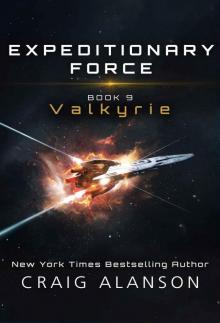 Valkyrie (Expeditionary Force Book 9)
Valkyrie (Expeditionary Force Book 9)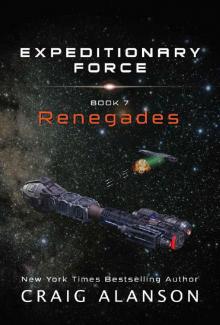 Renegades (Expeditionary Force Book 7)
Renegades (Expeditionary Force Book 7)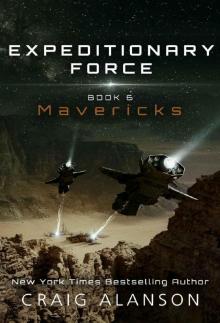 Mavericks (Expeditionary Force Book 6)
Mavericks (Expeditionary Force Book 6)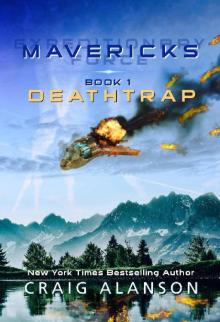 Deathtrap
Deathtrap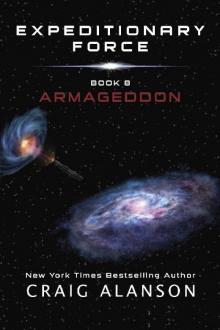 Armageddon
Armageddon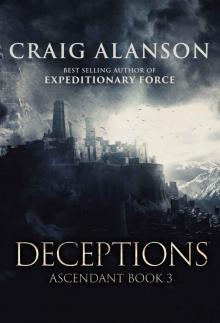 Deceptions (Ascendant Book 3)
Deceptions (Ascendant Book 3)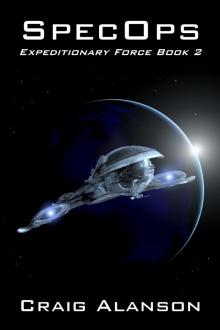 SpecOps (Expeditionary Force Book 2)
SpecOps (Expeditionary Force Book 2)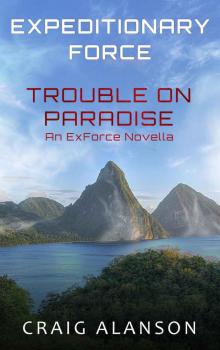 Trouble on Paradise: an ExForce novella (ExForce novellas Book 1)
Trouble on Paradise: an ExForce novella (ExForce novellas Book 1) Transcendent (Ascendant Book 2)
Transcendent (Ascendant Book 2) Columbus Day (Expeditionary Force Book 1)
Columbus Day (Expeditionary Force Book 1)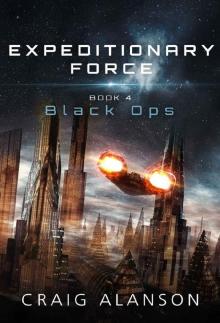 Black Ops (Expeditionary Force Book 4)
Black Ops (Expeditionary Force Book 4)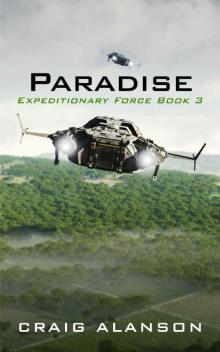 Paradise (Expeditionary Force Book 3)
Paradise (Expeditionary Force Book 3) Ascendant
Ascendant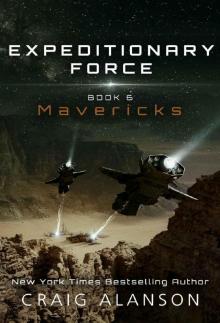 Mavericks
Mavericks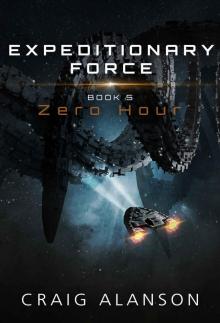 Zero Hour (Expeditionary Force Book 5)
Zero Hour (Expeditionary Force Book 5)